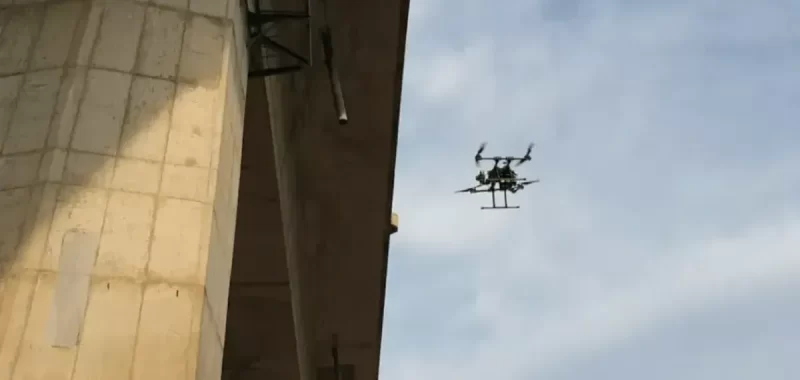Uncategorized
The Role of Pods and Gimbal Cameras in Modern Building and Infrastructure Inspections
 As technological advancements continue, building and infrastructure inspections are undergoing a transformation toward automation and smart solutions. Traditional manual inspection methods, often plagued by inefficiency, high costs, and safety risks, are being replaced by drones equipped with gimbal cameras and pod systems. These technologies are revolutionizing inspection processes by enhancing quality, speed, and safety. This article explores their key roles and benefits in modern infrastructure inspections.
As technological advancements continue, building and infrastructure inspections are undergoing a transformation toward automation and smart solutions. Traditional manual inspection methods, often plagued by inefficiency, high costs, and safety risks, are being replaced by drones equipped with gimbal cameras and pod systems. These technologies are revolutionizing inspection processes by enhancing quality, speed, and safety. This article explores their key roles and benefits in modern infrastructure inspections.
1. Benefits of Gimbal Cameras and Pod Systems
Stabilized Imaging: Gimbal cameras use electric stabilizers to ensure steady and clear footage, even during flight. This guarantees high-quality visuals for detailed inspections.
Integrated Sensors: Pod systems, which house gimbal cameras, can incorporate advanced sensors like thermal imaging cameras and LiDAR (Light Detection and Ranging). This multi-sensor integration allows for comprehensive data collection, enabling inspections in challenging environments such as high altitudes or confined spaces. The result is improved accuracy and thorough coverage.
2. Increased Efficiency and Accuracy
Faster Inspections: Traditional inspection methods are often time-intensive and constrained by environmental factors. Drones equipped with gimbal cameras and pods can quickly reach difficult-to-access areas like building facades, tunnels, or bridge decks. This significantly reduces inspection time and labor costs.
Precision Data: The stability of gimbal cameras ensures high-resolution images, while the sensors in pod systems provide additional data, such as thermal readings and 3D scans. These capabilities allow for the precise detection of structural issues, including cracks, corrosion, and leaks.
3. Enhanced Safety and Risk Mitigation
Eliminating Physical Risks: Inspections of high-altitude or hazardous areas often pose significant safety risks to workers. Drones eliminate the need for personnel to physically access such zones, reducing the likelihood of accidents.
Operation in Tough Conditions: The stability of pod systems ensures reliable performance even in adverse weather conditions, further improving the safety and effectiveness of inspections.
4. Comprehensive Data Collection and Analysis
Multi-Sensor Insights: Drones equipped with pod systems can gather diverse data types, including high-definition visuals, thermal imaging, and LiDAR-based 3D models.
Detailed Assessments: Thermal imaging helps identify temperature irregularities, which may signal water damage or electrical faults. Meanwhile, LiDAR creates accurate 3D renderings of structures, enabling the detection of deformations or cracks. This comprehensive data supports timely maintenance and reduces the risk of costly repairs.
5. Cost-Effective and Sustainable Inspections
Long-Term Savings: While the initial investment in drone technology may be significant, it offers substantial long-term savings. Traditional inspection methods often require expensive equipment like scaffolding or cranes, adding to operational costs and time.
Minimal Disruption: Drones complete inspections quickly and without interrupting normal operations, reducing downtime and associated costs. This is particularly advantageous for critical infrastructure, such as power lines and bridges, where operational halts can have significant financial impacts.
6. Conclusion
The adoption of gimbal cameras and pod systems in drone technology is transforming the landscape of building and infrastructure inspections. By improving efficiency, accuracy, and safety, these innovative tools provide a reliable and cost-effective solution for maintaining critical infrastructure. As these technologies continue to advance, drones will play an increasingly vital role in the smart management and maintenance of buildings and infrastructure, optimizing their long-term performance while reducing costs.
